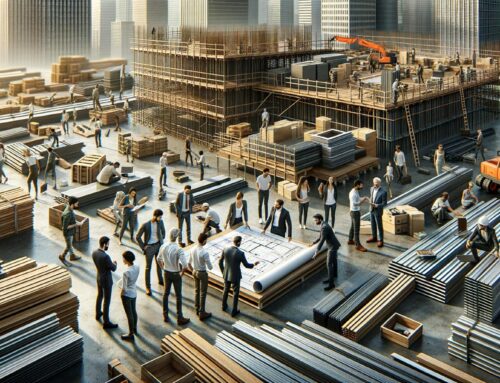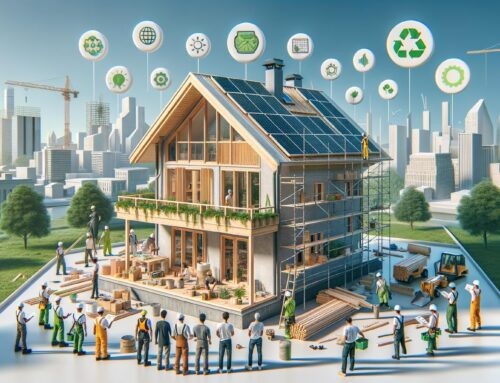
At Home Owners Association, we’re excited to explore the innovative use of recycled materials for building construction.
This sustainable approach not only reduces environmental impact but also offers cost-effective solutions for homeowners and builders alike.
In this post, we’ll dive into the benefits, types, and best practices of incorporating recycled materials into construction projects.
Let’s discover how these eco-friendly alternatives can transform the way we build and renovate our homes.
Why Recycled Materials Are Game-Changers in Construction
At Home Owners Association, we’ve witnessed the revolutionary impact of recycled materials in the construction industry. These materials offer numerous benefits that extend beyond environmental friendliness.
Slashing Costs and Boosting Sustainability
The use of recycled materials in construction can significantly reduce project costs. For instance, recycled concrete aggregate is highly effective for use in road bases and hardstand areas due to its compaction properties, which result in stronger and more durable constructions. This translates to substantial savings for homeowners and builders.
The environmental impact is equally impressive. Recycled materials can significantly reduce a building’s carbon footprint over its lifecycle. This reduction is important, considering that the construction industry accounts for a large portion of Australia’s total carbon emissions.
Enhancing Building Performance
Contrary to popular belief, recycled materials often outperform their virgin counterparts. Recycled steel, for example, is not only stronger but also more flexible than newly manufactured steel, making it an excellent choice for earthquake-resistant structures.
Recycled concrete aggregates have shown improved consolidation properties, which lead to more stable and durable constructions. Some studies indicate that concrete made with recycled aggregates can achieve higher strength levels faster than traditional concrete.
Meeting and Exceeding Green Building Standards
The use of recycled materials can help meet green building standards. In Australia, the Green Star Rating system recognizes and rewards the use of recycled materials in construction projects. According to the Green Building Council of Australia, for Green Star purposes, there are three types of product classes, including Environmentally Innovative products certified by a multi-criteria product certification scheme.
Property owners have reported increases in property values when incorporating recycled materials and adhering to green building standards. This boost in value, combined with the initial cost savings, makes recycled materials a smart financial choice for any construction project.
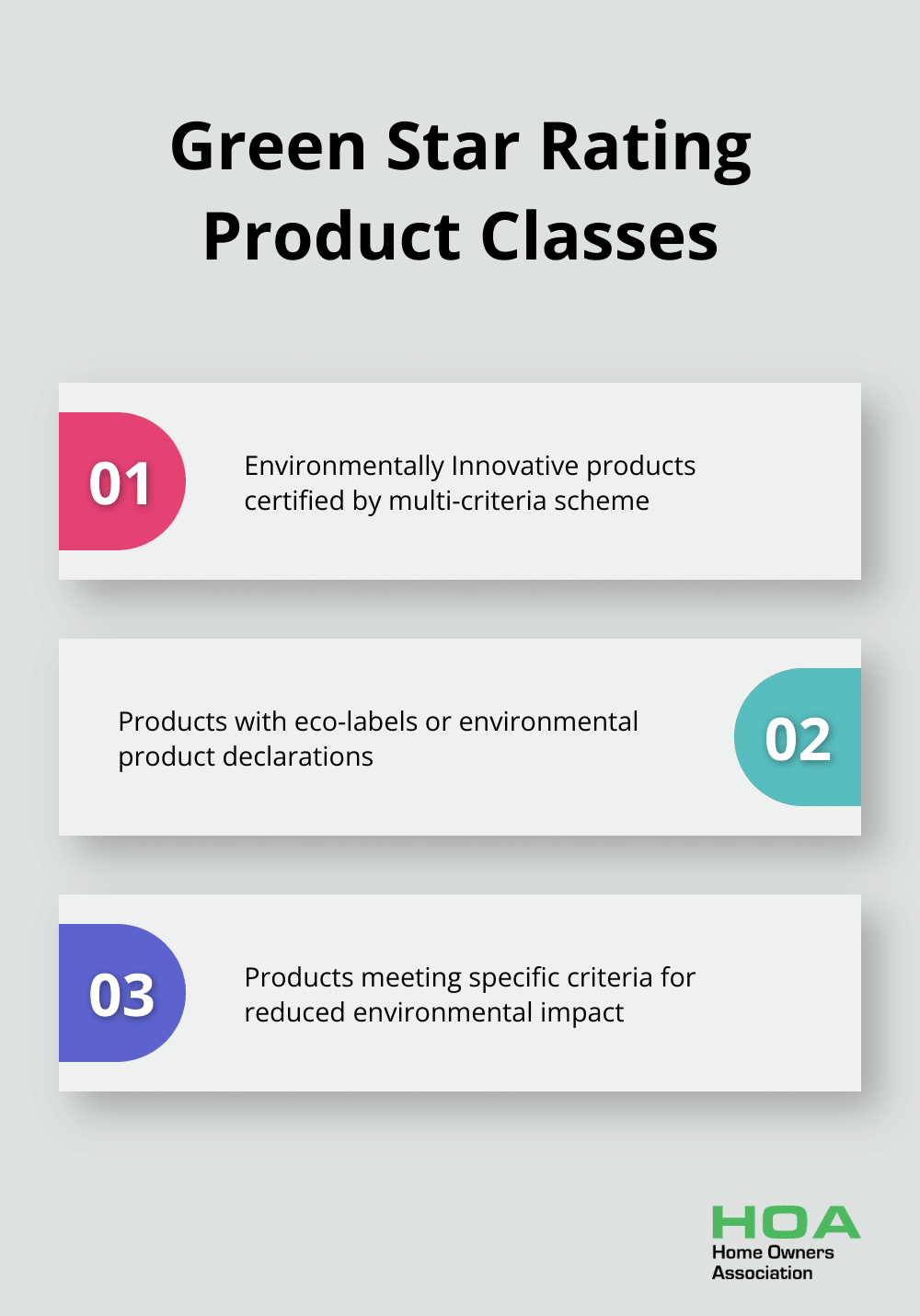
Innovation and Future Prospects
The construction industry continues to innovate with recycled materials. New technologies are improving the performance analysis and decision-making processes related to recycled building materials.
Researchers are developing advanced materials that present sustainable alternatives to traditional construction materials and significantly reduce carbon emissions.
The future of construction lies in the effective integration of recycled materials. As we move forward, we’ll explore the various types of recycled materials that are transforming the building landscape and revolutionizing sustainable construction practices.
What Recycled Materials Can Transform Your Construction Project?
Recycled Concrete Aggregate: The Foundation of Sustainable Building
Recycled concrete aggregate (RCA) revolutionizes sustainable construction. This material, created from crushed existing concrete structures, finds use in various applications, from road bases to new concrete mixes. Research has shown that concrete containing recycled aggregates has similar flexural strength and modulus of elasticity to concrete made with natural aggregates. This replacement not only reduces landfill waste but also decreases the demand for virgin materials, resulting in significant cost savings and environmental benefits.
Reclaimed Wood: Character and Sustainability Combined
Reclaimed wood offers more than just a trendy design choice-it provides a sustainable option that brings history and character to your project. Sourced from old barns, factories, or warehouses, this material works well for flooring, beams, or decorative elements. The Australian Timber Flooring Association notes that reclaimed wood can be up to 40% harder than new wood (due to its age and density), making it an excellent choice for high-traffic areas in your home.
Recycled Steel: Strength Meets Flexibility
Recycled steel stands as a powerhouse in sustainable construction. The World Steel Association confirms that steel is 100% recyclable and can be reused indefinitely without losing its properties. Recycled steel often outperforms virgin steel in terms of strength and flexibility. The use of recycled steel in construction can save over 1400 kg of iron ore, 740 kg of coal, and 120 kg of limestone compared to producing new steel, making it an environmentally and economically sound choice.
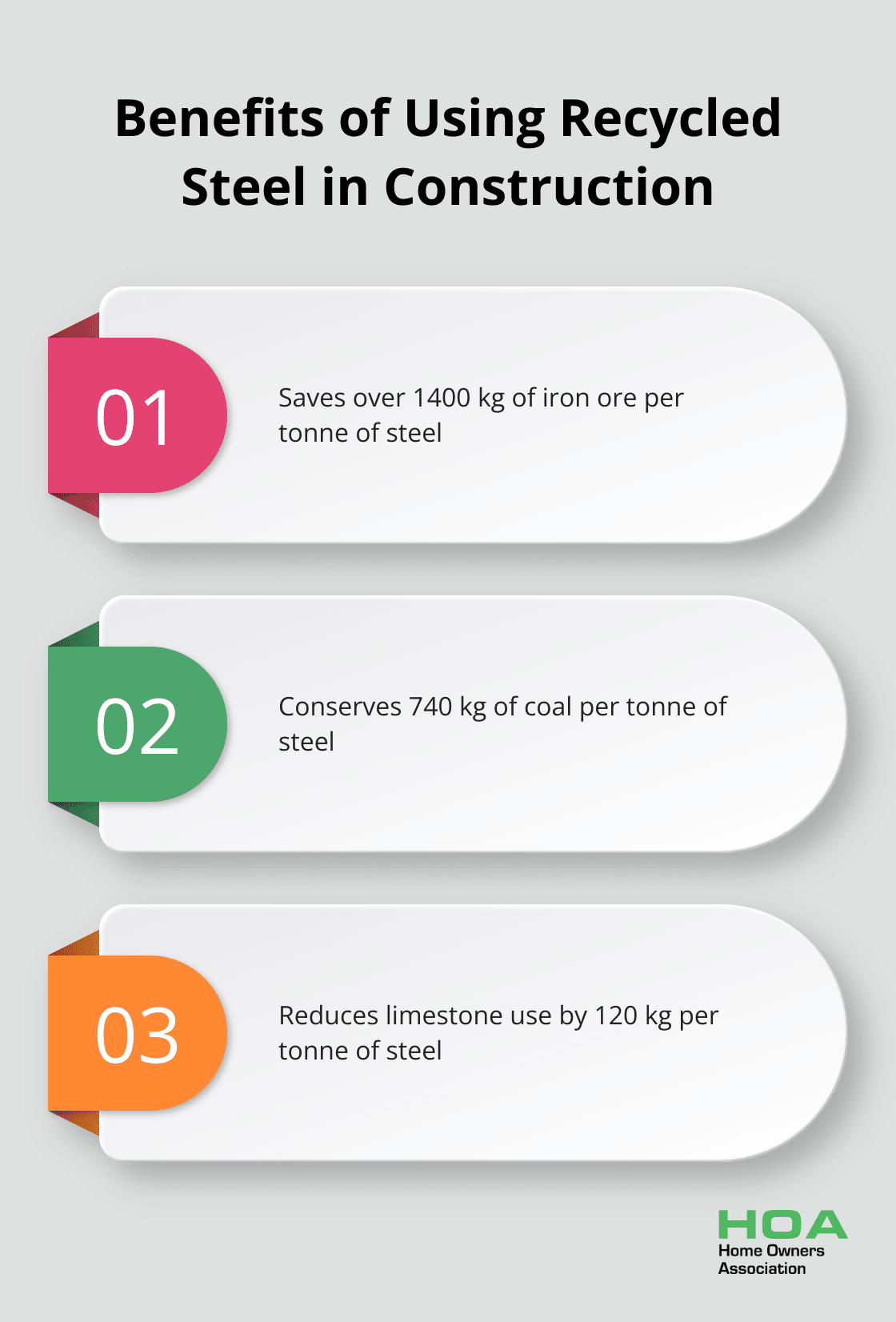
Innovative Plastic Solutions: Waste Transformed
Recycled plastic finds its way into construction through innovative applications. From decking materials to insulation, these products offer durability and weather resistance while diverting plastic waste from landfills. The CSIRO has developed a process to turn plastic waste into polymer bricks, which are not only stronger than concrete blocks but also have better insulating properties. This technology could redefine how we think about building materials and waste management.
Glass and Ceramic Waste: Beauty in Recycling
Glass and ceramic waste present unique opportunities in sustainable construction. Recycled glass can be crushed and used as an aggregate in concrete (known as “glascrete”), or melted down to create new glass products for windows and decorative features. Ceramic waste, when ground into a fine powder, can serve as a partial replacement for cement in concrete mixtures, reducing the carbon footprint of construction projects.
The integration of these recycled materials into construction projects not only builds structures but also contributes to a more sustainable future. As we move forward, it’s essential to understand the best practices for incorporating these materials effectively. The next section will explore how to maximize the benefits of recycled materials while ensuring quality and compliance in your construction projects.
How to Maximize Recycled Materials in Construction
At Home Owners Association, we’ve observed the transformative power of recycled materials in construction projects. To help you harness these sustainable options effectively, we’ve compiled essential best practices based on industry standards and our extensive experience.
Implement Rigorous Quality Control
Quality control is essential when using recycled materials. We recommend partnerships with certified testing laboratories to assess the physical and chemical properties of recycled aggregates, steel, and other materials. AS 1141 contains methods for the sampling and testing of aggregates used for concrete, asphalt, sprayed bituminous surfacing, pavements, railway ballast and more.
On-site testing should occur regularly. A comprehensive quality assurance program that includes frequent sampling and testing throughout the construction process will help maintain consistency and identify potential issues early.
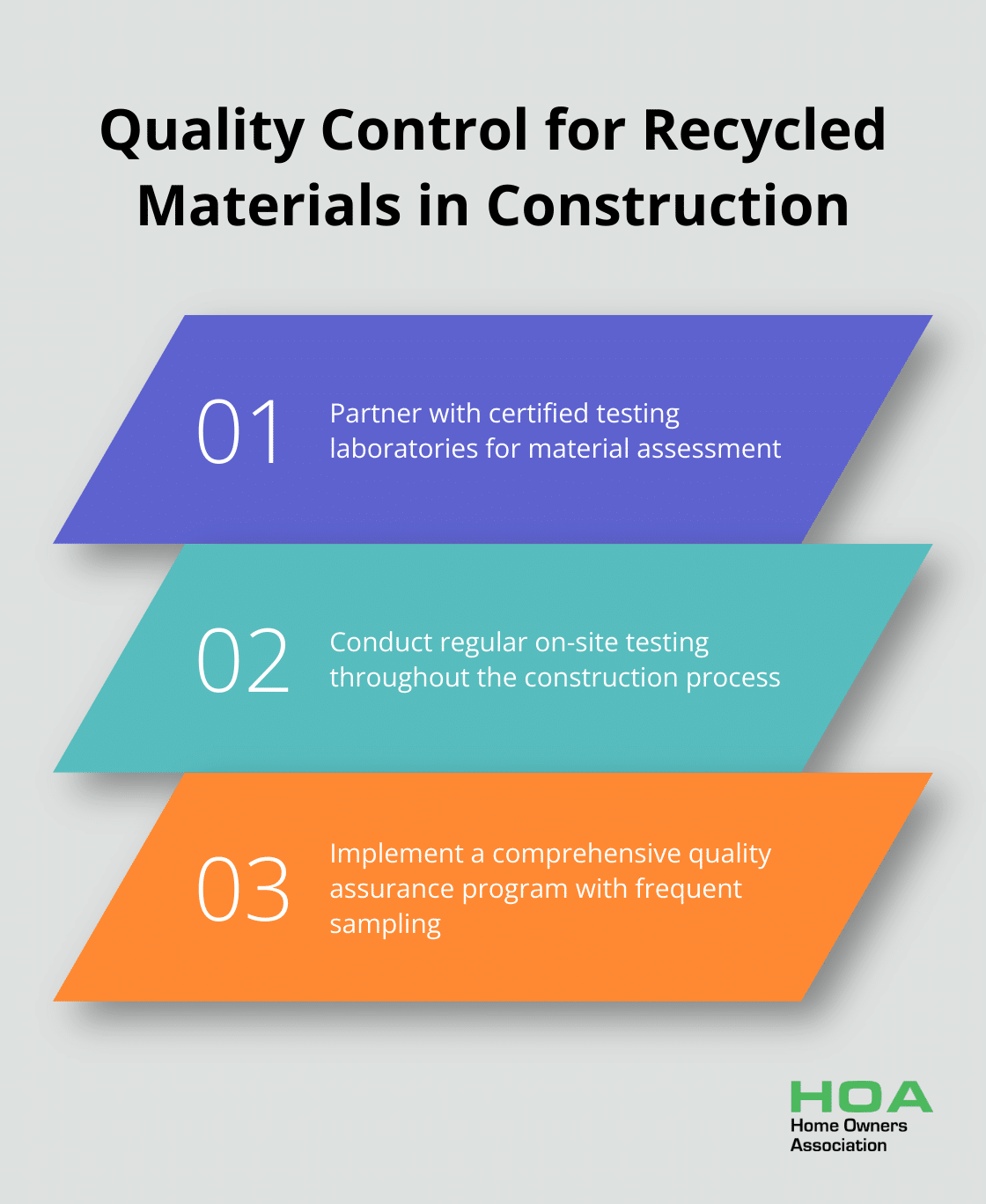
Source and Procure Strategically
Careful planning is necessary when sourcing recycled materials. We advise you to establish relationships with reputable suppliers who can provide consistent quality and quantity. The Waste Management Association of Australia offers a directory of certified recyclers (an excellent starting point for your search).
Consider the project’s specific needs when procuring materials. If you’re using recycled steel, work with suppliers who can provide detailed information on the steel’s origin and previous applications. This knowledge will ensure you obtain materials suitable for your project’s structural requirements.
Integrate Innovative Design
The incorporation of recycled materials often requires adjustments to traditional design approaches. We suggest collaboration with architects and engineers experienced in sustainable construction. These professionals can help optimize designs to leverage the unique properties of recycled materials.
For example, designs might need to account for slightly different water absorption rates when using recycled concrete aggregates compared to virgin aggregates. Similarly, reclaimed wood might require additional treatment or reinforcement depending on its condition and intended use.
Try to use Building Information Modeling (BIM) software to simulate and analyze the performance of recycled materials in your design. BIM facilitates the identification of potential waste streams early in the design process.
Train and Educate Construction Teams
The successful implementation of recycled materials relies heavily on the knowledge and skills of your construction team. Invest in comprehensive training programs that cover the unique properties, handling requirements, and installation techniques for various recycled materials.
Organize regular workshops and seminars to keep your team updated on the latest advancements in sustainable construction practices. Encourage open communication and feedback from workers to address any challenges or concerns they may encounter when working with recycled materials.
Monitor and Adjust Throughout the Project
The use of recycled materials may require ongoing adjustments during the construction process. Establish a system for continuous monitoring and evaluation of material performance. This approach will allow you to make real-time adjustments to ensure optimal results.
Keep detailed records of material usage, performance, and any issues encountered. These records will prove valuable for future projects and can contribute to the broader knowledge base of sustainable construction practices in Australia.
Final Thoughts
Recycled materials for building construction represent a significant advancement in sustainable practices within the industry. These materials offer numerous benefits, including reduced environmental impact, cost-effectiveness, and improved building performance. The demand for new buildings and infrastructure will increase as the global population grows and urbanization accelerates, making sustainable construction practices essential.
The future of recycled materials in building construction looks promising. Ongoing research and technological advancements continue to improve the quality, performance, and versatility of these sustainable alternatives. We anticipate greater adoption of recycled materials across the construction industry as awareness grows and regulations evolve.
Home Owners Association supports Melbourne homeowners in their pursuit of sustainable and cost-effective construction practices. Our members receive expert advice, access to trade pricing, and resources to make informed decisions about incorporating recycled materials into their projects. The use of recycled materials in construction will play a vital role in shaping the cities and homes of tomorrow.

